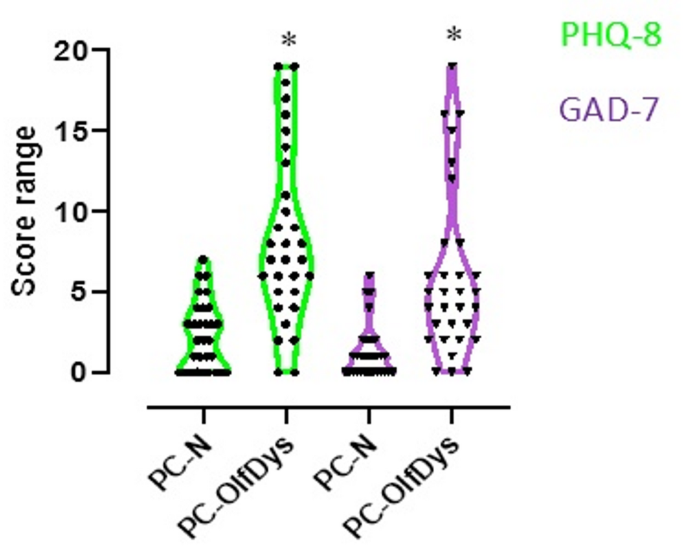Chandelier
Senior Member (Voting Rights)

Alterations of the amygdala in post-COVID olfactory dysfunction - Scientific Reports
Olfactory dysfunction (OD) as a symptom of COVID-19 has received significant attention in research due to its high prevalence. While it is transient in the majority of individuals, post-COVID OD persists in a notable subset of patients even months to years after the acute infection. A deeper...
Divesh Thaploo, Lars-Patrick Schmill, Naomi Behrend, Svea Gerlach, Cornelia Fogel, Anne-Kathrin Ruß, Wolfgang Lieb, Stefan Schreiber, Walter Maetzler, Corina Maetzler, Michael Krawczak, Norman Weinert, Thomas Bahmer, Shimita Raquib, Karin Fiedler, Jörg Janne Vehreschild, Olav Jansen, Coralie Mignot, Schekeb Aludin & Martin Laudien
Abstract
Olfactory dysfunction (OD) as a symptom of COVID-19 has received significant attention in research due to its high prevalence.While it is transient in the majority of individuals, post-COVID OD persists in a notable subset of patients even months to years after the acute infection.
A deeper understanding of the underlying factors driving this phenomenon is essential.
There is increasing evidence for an involvement of the central nervous system in this deficit.
The objective of this study was to investigate the structural connectivity and integrity of white matter pathways in brain regions associated with olfactory processing using MRI with diffusion tensor imaging (DTI) in patients with persistent post-COVID OD.
The study involved 61 patients, divided into two groups: 31 participants with post-COVID OD (PC-OlfDys) and 30 post-COVID normosmic controls (PC-N).
For MRI analyses, a region of interest (ROI)-based approach and voxelwise statistical comparisons between the groups with age as a covariate was used.
Fractional anisotropy (FA) in the left amygdala was higher in the PC-OlfDys than in the PC-N group, and radial diffusivity (RD) in the right amygdala was higher in the PC-OlfDys group than in PC-N.
The PC-OlfDys group exhibited higher depression and anxiety scores, as measured by the eight-item Patient Health Questionnaire depression scale and the Generalized Anxiety Disorder 7 questionnaire, respectively.
This study shows that post-COVID OD is associated with significant changes in the myelination or axonal diameter of olfactory-related brain regions.
As the amygdala, putamen and piriform cortex (all involved in olfactory function and emotional well-being) showed associations with depression and anxiety scores, we hypothesise that post-COVID OD and depression and anxiety are interrelated, although the direction of this relationship remains to be elucidated.
